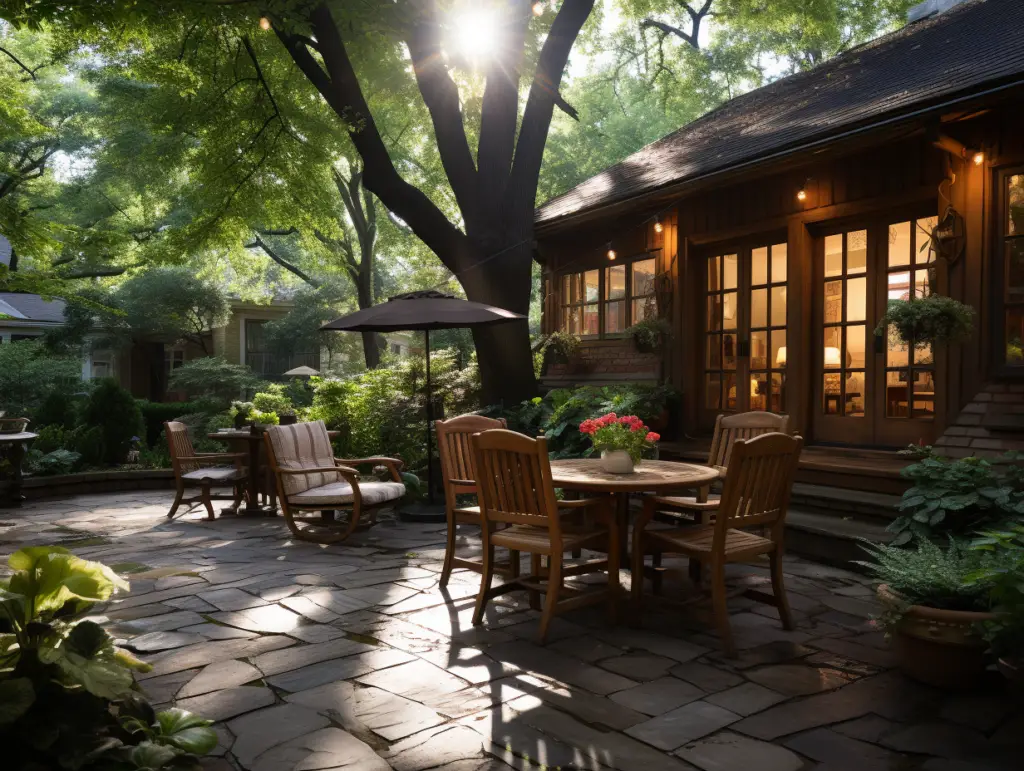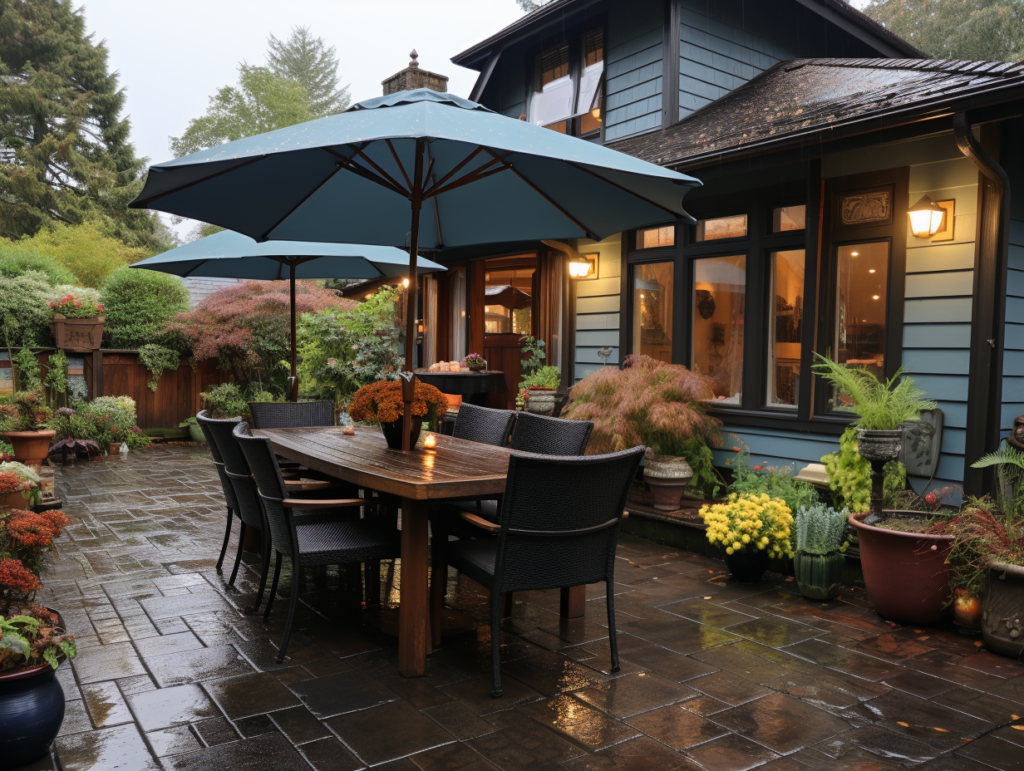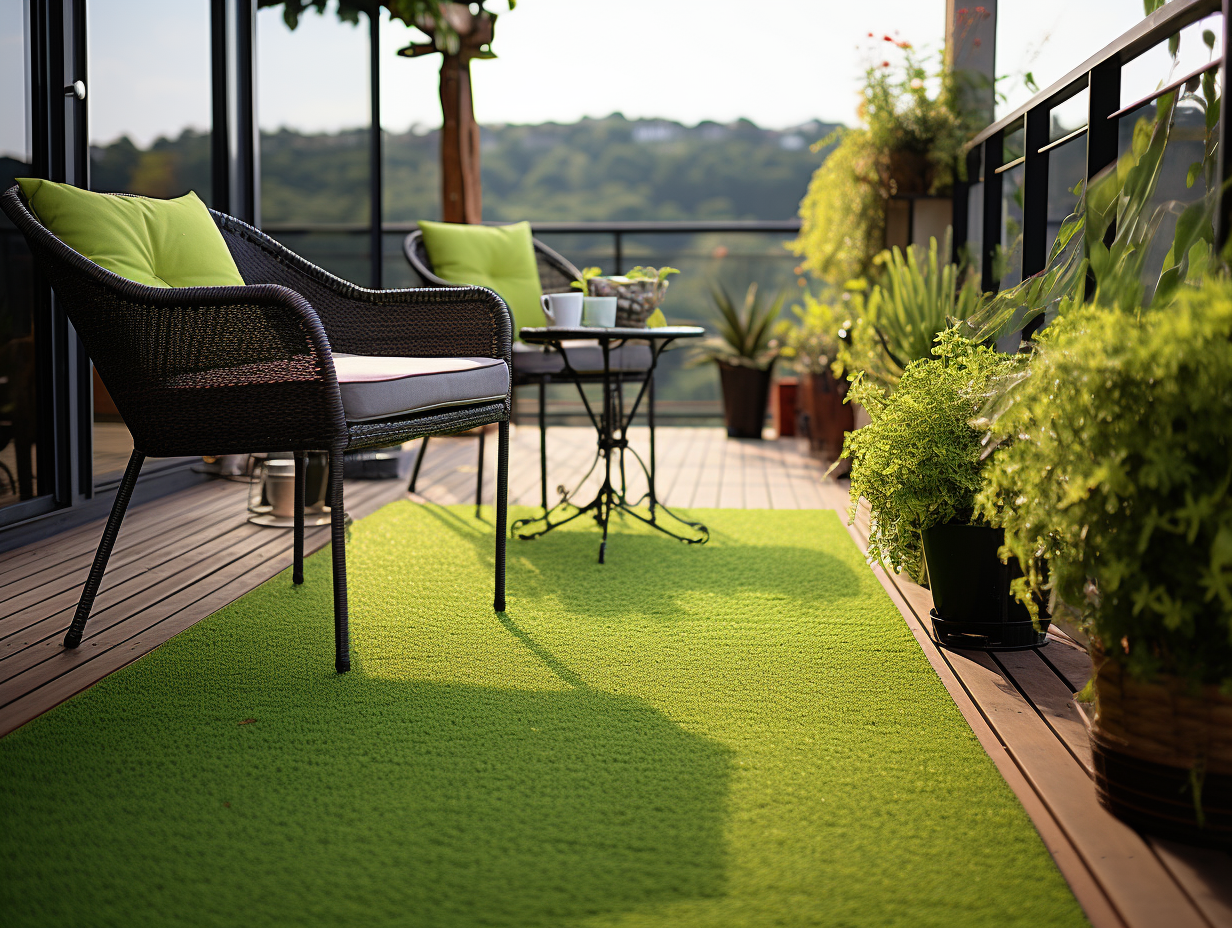Building a raised patio is a great way to add an outdoor living space to your home. It not only enhances the aesthetics of your property but also provides an ideal place for relaxation and entertainment. However, building a raised patio requires careful planning and execution to ensure that it is stable and long-lasting.
In this article, we will take you through the steps involved in building a raised patio, including planning, excavation, base preparation, retaining wall installation, and patio installation.
To begin with, planning is crucial when building a raised patio. You need to determine the size, shape, and location of the patio, as well as the height, depth, and base of the retaining wall. It is important to consider factors such as drainage, access, and the surrounding landscape when planning your raised patio. Once you have a clear plan in place, you can move on to excavation, which involves removing the topsoil and preparing the area for the base layer.
The next step is base preparation, which is a two-part process that is repeated for both the retaining wall and patio installation. This involves adding layers of gravel and sand, compacting them, and ensuring that they are level.
The retaining wall installation comes next, where you will build a sturdy wall to support the patio and prevent soil erosion. Finally, you can install the patio pavers, ensuring that they are level and securely in place. By following these steps, you can build a raised patio that is both functional and beautiful.

Planning and Preparation
Before starting to build a raised patio, it is essential to plan and prepare for the project. This section will cover some of the critical aspects of planning and preparation, including choosing the right location and designing the patio.
Choosing the Right Location
The first step in planning a raised patio is choosing the right location. Consider the following factors when selecting the location:
- Backyard: Look for a location that is easily accessible from your house and fits with the overall style of your backyard.
- Shape: Consider the shape of the area where you want to build the patio. A rectangular or square shape is easier to work with than an irregular shape.
- Levels: Look for a location that is relatively level. If the area is not level, you will need to build retaining walls to level the area.
- Curves: If you want a curved patio, choose a location that allows for a smooth curve without too many sharp angles.
- Seating: Consider the location of your patio in relation to seating areas. You may want to build the patio near an outdoor dining area or a seating area.

Designing the Patio
Once you have chosen the location for your raised patio, the next step is to design the patio. Consider the following factors when designing the patio:
- Raised Patio Design: Choose a raised patio design that fits with the overall style of your backyard. Consider the materials you want to use, such as natural stones or pavers.
- Size: Determine the size of the patio based on your needs and the available space.
- Height: Decide on the height of the patio. A typical height for a raised patio is between 18 and 24 inches.
- Retaining Walls: If the area is not level, you will need to build retaining walls to level the area. Choose retaining wall blocks that complement the design of your patio.
- Seating: Consider adding built-in seating to your patio design for added comfort and convenience.
By carefully planning and preparing for your raised patio project, you can ensure a successful and enjoyable construction process.

Materials and Tools
When it comes to building a raised patio, you’ll need a range of materials and tools to get the job done right. This section will cover what you need to gather and what tools you’ll need to complete the project.
Gathering Materials
Before you start building your raised patio, you’ll need to gather the right materials to ensure that it’s sturdy and long-lasting. Here are some of the materials you’ll need:
- Base material: This is the material that will go underneath your patio to provide a stable foundation. It’s usually made of crushed stone or gravel and should be at least 4 inches thick.
- Plate compactor: You’ll need a plate compactor to compress the base material and ensure that it’s level.
- Sand: Sand is used to level the base material and provide a smooth surface for your patio.
- Concrete: You’ll need concrete to create the retaining wall and the patio itself. Make sure you get enough to cover the entire area of your patio.
- Retaining wall blocks: These blocks are used to create the retaining wall that will hold up the raised patio. Make sure you choose blocks that are sturdy and can withstand the weight of the patio.
- Brick: If you want to add a decorative touch to your patio, you can use brick to create a border or pattern.
- Reinforcement: Depending on the size of your patio, you may need to reinforce it with steel bars or wire mesh to prevent cracking and ensure that it’s strong enough to support weight.
Tools Needed
In addition to the materials, you’ll need a range of tools to build your raised patio. Here are some of the tools you’ll need:
- Shovel: You’ll need a shovel to dig out the area where you’ll be building your patio.
- Wheelbarrow: A wheelbarrow will come in handy for transporting materials like sand and concrete.
- Level: You’ll need a level to ensure that your patio is even and level.
- Tape measure: Use a tape measure to calculate the dimensions of your patio and ensure accurate placement of materials.
- Stakes and string: These are used to mark the perimeter of the patio area.
- Hammer: You’ll need a hammer to secure the retaining wall blocks in place.
- Saw: A saw will come in handy if you need to cut any of the materials to size.
- Trowel: You’ll need a trowel to spread the concrete and create a smooth surface.
In summary, building a raised patio requires a range of materials and tools to ensure that it’s sturdy and long-lasting. Make sure you gather all the necessary materials and tools before you start the project to ensure a smooth construction process.

Building the Retaining Wall
Building a raised patio requires constructing a retaining wall to hold the soil and prevent erosion. The retaining wall should be built sturdy enough to support the weight of the patio and withstand the elements. Here are the steps to build a retaining wall for a raised patio.
Laying the Foundation
The first step in building a retaining wall is to lay a solid foundation. Start by digging a trench along the perimeter of the patio. The trench should be at least 6 inches deep and wide enough to accommodate the base material and the retaining wall blocks. Use a level to ensure that the trench is level and even.
Next, add a layer of gravel to the bottom of the trench. The gravel will provide drainage for the wall and prevent water from accumulating behind the wall. Compact the gravel using a hand tamper or a vibratory plate compactor.
Building the Wall
Once the foundation is in place, it’s time to start building the wall. Start at one corner of the patio and work your way around. Begin by placing the first retaining wall block in the corner of the trench. Use a level to ensure that the block is level and even.
Continue placing the blocks along the trench, making sure that each block is level and even with the previous one. For corners, use corner blocks to create a smooth, seamless transition.
As you build the wall, backfill the space behind it with gravel or crushed stone. This will provide additional support and drainage for the wall. Continue building the wall until it reaches the desired height.
Remember to follow the manufacturer’s instructions for the retaining wall blocks you are using. Some blocks may require additional reinforcement, such as geogrid or concrete adhesive, to ensure stability and durability.
In conclusion, building a retaining wall for a raised patio requires careful planning and execution. By following these steps and using the right materials, you can create a sturdy, long-lasting retaining wall that will support your patio for years to come.

Preparing the Base
Before starting to build a raised patio, it is important to prepare the base properly. This will ensure that the patio is level, stable, and long-lasting. The base preparation involves two main steps: leveling the ground and adding base material.
Leveling the Ground
The first step in preparing the base is to level the ground. This involves removing any grass, weeds, or other vegetation from the area where the patio will be built. It is important to ensure that the ground is level, as this will help to prevent the patio from settling or shifting over time.
One way to level the ground is to use a level and a long straight board, such as a 2×4. Place the board on the ground and use the level to ensure that it is perfectly level. Then, move the board around the area where the patio will be built, checking the level at various points to make sure that the ground is level.
Adding Base Material
After the ground has been leveled, the next step is to add base material. This will provide a stable foundation for the patio and help to ensure that it does not settle or shift over time. The type of base material used will depend on the size and weight of the patio, as well as the type of soil in the area.
One common base material is gravel or crushed stone. This should be added in layers of 2-3 inches at a time, and compacted using a plate compactor or hand tamper. It is important to ensure that the base is compact and level, as this will help to prevent the patio from settling or shifting over time.
Another option for base material is sand. This can be used for smaller patios, or for areas where the soil is already firm and stable. The sand should be added in layers of 1-2 inches at a time, and compacted using a plate compactor or hand tamper.
In summary, preparing the base is a crucial step in building a raised patio. Leveling the ground and adding base material will help to ensure that the patio is level, stable, and long-lasting. By following these steps and using the right base material, you can create a beautiful and functional raised patio that will provide years of enjoyment.
Installing the Patio Surface
Once you have constructed the retaining wall, it is time to install the patio surface. This involves laying the pavers and cutting them to fit the desired shape of your raised patio.
Laying the Pavers
Before laying the pavers, it is important to prepare the surface. Start by adding a layer of landscape fabric to prevent weeds from growing between the pavers. Then, add 2-3 inches of gravel or crushed stone as the base. Compact it using a vibratory plate compactor or hand tamper to ensure proper drainage for your wall. Make sure that the base is compact and level.
Next, lay the pavers in the desired pattern. Start at one corner and work your way out, making sure that each paver is level with the ones around it. Use a rubber mallet to tap each paver into place.
Cutting the Pavers
In order to fit the pavers to the shape of your raised patio, you will likely need to cut some of them. This can be done with a diamond blade saw or a chisel and hammer. Measure the area that needs to be cut and mark it on the paver. Then, carefully cut along the line with the saw or chisel.
Once all of the pavers are laid and cut to fit, fill the gaps between them with sand. Use a push broom to sweep the sand over the surface of the patio, making sure that it fills all of the gaps. Then, use a plate compactor to press the pavers into the sand and set them firmly in place.
Maintaining your raised patio is important to ensure its longevity. Sweep the surface regularly to remove debris and keep it looking clean. You may also need to reapply sand between the pavers over time as it can wash away with heavy rain or foot traffic.
Building a raised patio with pavers can be a challenging but rewarding DIY project. By following these steps and taking the time to properly install and maintain your patio, you can enjoy a beautiful outdoor living space for years to come.
Finishing Touches
Once the raised patio is constructed, it’s time to add the finishing touches. This includes adding drainage and sealing the patio to ensure it lasts for years to come.
Adding Drainage
Proper drainage is essential for any patio, especially a raised one. Without proper drainage, water can accumulate and cause damage to the structure. To add drainage to your raised patio, follow these steps:
- Create a slope: Ensure that your patio has a slight slope to allow water to drain off. A slope of 1/8 inch per foot is sufficient.
- Install a drainage system: A drainage system can be installed by digging a trench around the perimeter of the patio and filling it with gravel or crushed stone. This will allow water to drain away from the patio.
- Add a drain: If your patio is large, consider adding a drain in the center to allow for more efficient drainage.
Sealing the Patio
Sealing your raised patio is an important step in ensuring it lasts for years to come. Sealing will protect the patio from water damage, staining, and other types of wear and tear. Follow these steps to seal your patio:
- Clean the patio: Before sealing, ensure that your patio is clean and free of debris. Use a pressure washer or a stiff-bristled brush to remove any dirt or grime.
- Apply sealant: Choose a sealant that is appropriate for your patio material. Apply the sealant using a roller or sprayer, ensuring that it is evenly distributed.
- Let it dry: Allow the sealant to dry completely before using the patio. This usually takes 24-48 hours.
Maintenance
Regular maintenance is essential for keeping your raised patio looking great. Here are a few tips to keep in mind:
- Sweep the patio regularly to remove dirt and debris.
- Remove any stains as soon as possible to prevent them from setting in.
- Check the drainage system regularly to ensure that it is functioning properly.
- Reapply sealant every few years to ensure that the patio remains protected.
By following these tips, you can ensure that your raised patio looks great and lasts for years to come.
Costs and Considerations
When planning to build a raised patio, it’s important to consider the costs involved and various factors that can affect the final price. In this section, we’ll take a closer look at how to calculate the cost of a raised patio and what factors you should keep in mind.
Calculating the Cost
The cost of building a raised patio can vary widely depending on several factors, such as the materials used, the size of the patio, and the complexity of the design. According to HomeAdvisor, the price of materials to build a raised patio varies from $1 to $35 per square foot, with most people paying $10 to $30 per square foot. Labor costs can range from $8 to $50 per square foot, with the average being around $20 per square foot.
To calculate the cost of your raised patio, you’ll need to consider the following:
- Materials: The type of materials you choose will have a significant impact on the cost. For example, gravel is the least expensive option, while high-end granite cobblestones can cost the most.
- Size: The larger the patio, the more materials and labor will be required, which will increase the cost.
- Design: A more complex design, such as one with multiple levels or intricate patterns, will require more time and skill, which will increase the labor cost.
- Location: The location of your patio can also impact the cost. If the area is difficult to access or requires extensive excavation work, this will add to the overall cost.
Factors to Consider
Aside from the cost, there are several other factors to consider when building a raised patio. These include:
- Building codes: Before starting your project, it’s important to check with your local building department to ensure that your patio complies with local codes and regulations.
- Drainage: Proper drainage is essential to prevent water from pooling on your patio, which can cause damage over time. Be sure to include drainage solutions in your design.
- Maintenance: Consider the maintenance requirements of the materials you choose. Some materials, such as natural stone, may require more upkeep than others.
- Functionality: Think about how you plan to use your patio. Will it be a space for entertaining or relaxation? Will you need to include features such as lighting or seating?
By considering these factors and calculating the cost, you can ensure that your raised patio is both functional and beautiful, while staying within your budget.

![What Gravel To Use For Patio Base [Best Options]](https://www.cleverpatio.com/wp-content/uploads/2021/11/What-Gravel-To-Use-For-Patio-Base-270x180.jpg)


Leave a Reply